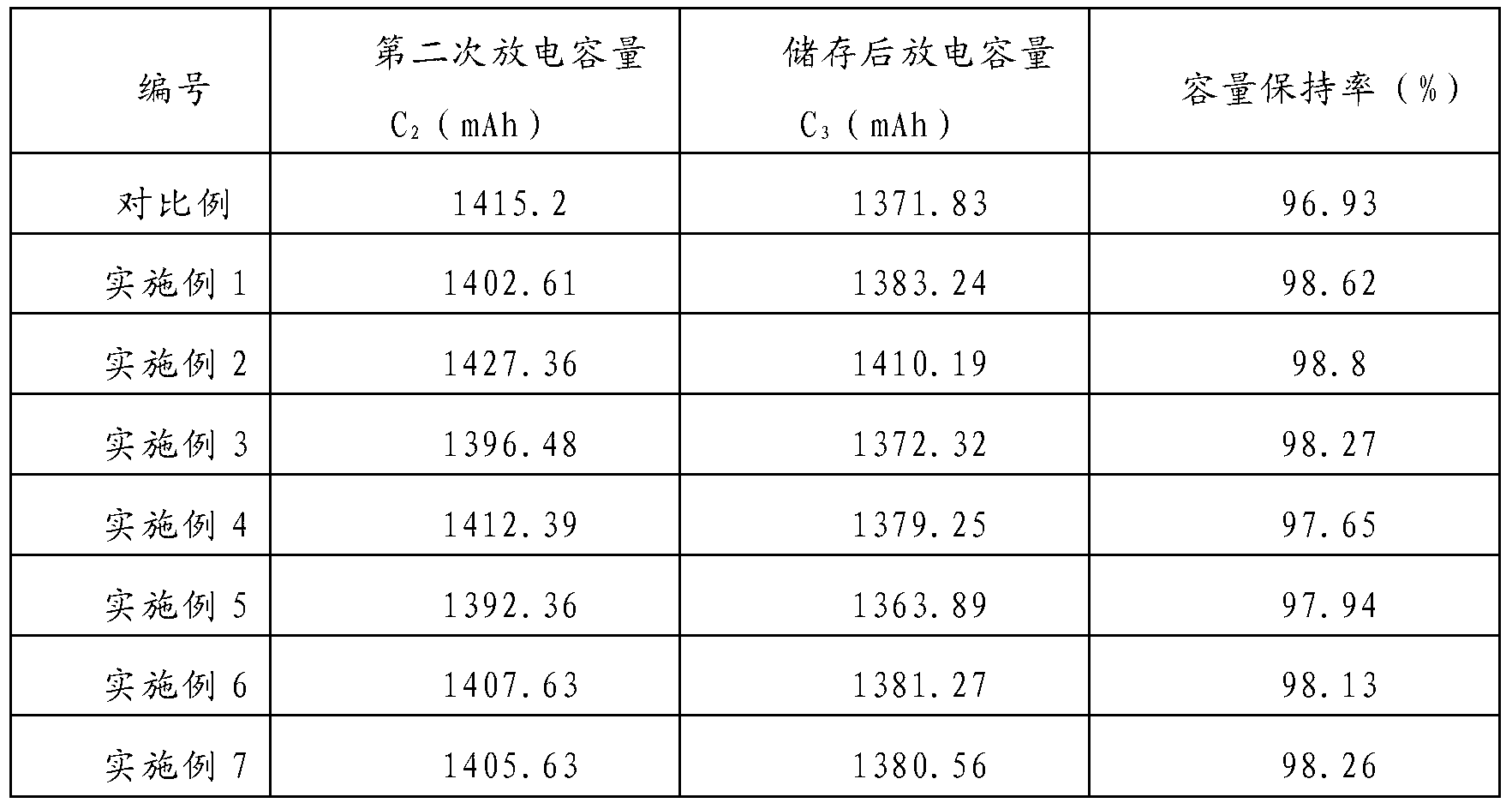Electrolyte for lithium battery and lithium ion battery comprising same
A lithium battery and electrolyte technology, applied in the field of lithium battery electrolyte, can solve the problems of lithium ion battery capacity attenuation and other problems, achieve the effect of ensuring cycle characteristics and storage performance, and preventing decomposition
- Summary
- Abstract
- Description
- Claims
- Application Information
AI Technical Summary
Problems solved by technology
Method used
Image
Examples
Embodiment 1
[0037] This embodiment provides a lithium ion battery.
[0038] The composition of the positive electrode material of the lithium-ion battery (based on the mass fraction of the positive electrode material as 100%): 93% lithium iron phosphate, 3% carbon nanotubes, and 4% polyvinylidene fluoride.
[0039] The composition of the negative electrode material of the lithium-ion battery (based on the mass fraction of the negative electrode material as 100%): 94% graphite, 6% polyacrylic acid.
[0040] The composition of the electrolyte (based on the sum of the mass of the solvent and additives as 100%): the solvent is: 25% diethyl carbonate (DEC), 39.99% ethyl methyl carbonate (EMC), 35% Fluoroethylene carbonate (FEC);
[0041] Additive: 0.01% (DMSO);
[0042] The electrolyte salt is: lithium hexafluorophosphate LiPF 6 Lithium dioxalate borate LiBOB, Lithium hexafluorophosphate LiPF 6 The amount concentration of the substance in the electrolyte is 0.4 mol / L, and the amount concen...
Embodiment 2
[0049] This embodiment provides a lithium ion battery.
[0050]The composition of the positive electrode material of the lithium-ion battery (based on the mass fraction of the positive electrode material as 100%): 94% lithium iron phosphate, 2% carbon fiber, and 4% polyvinylidene fluoride.
[0051] The composition of the negative electrode material of the lithium-ion battery (based on the mass fraction of the negative electrode material as 100%): 92% graphite, 8% polyacrylic acid.
[0052] The composition of the electrolyte (based on the sum of the mass of the solvent and additives as 100%): the solvent is: 41% diethyl carbonate (DEC), 58% ethyl methyl carbonate (EMC);
[0053] The additives are: 0.5% dimethyl sulfoxide (DMSO) and 0.5% butyl sulfoxide;
[0054] The electrolyte salt is: lithium hexafluorophosphate LiPF 6 , the concentration of the substance in the electrolyte is 1.2mol / L.
[0055] The preparation method of the battery: the same as the preparation method of t...
Embodiment 3
[0058] This embodiment provides a lithium ion battery.
[0059] The composition of the positive electrode material of the lithium-ion battery (based on the mass fraction of the positive electrode material as 100%): 91% lithium iron phosphate, 4% small particle conductive carbon black, and 5% polyvinylidene fluoride.
[0060] The composition of the negative electrode material of the lithium-ion battery (based on the mass fraction of the negative electrode material as 100%): 93% graphite, 7% polyacrylic acid.
[0061] The composition of the electrolyte (based on the sum of the mass of the solvent and additives as 100%): the solvent is: 32% ethylene carbonate (EC), 30% diethyl carbonate (DEC), 35% fluoroethylene carbonate Ester (FEC);
[0062] The additives are: 1% dimethyl sulfoxide (DMSO), 1% butyl sulfoxide, 1% ethyl methyl sulfoxide (EMS);
[0063] The electrolyte salt is: lithium hexafluorophosphate LiPF 6 , where lithium hexafluorophosphate LiPF 6 The concentration of t...
PUM
 Login to View More
Login to View More Abstract
Description
Claims
Application Information
 Login to View More
Login to View More - R&D
- Intellectual Property
- Life Sciences
- Materials
- Tech Scout
- Unparalleled Data Quality
- Higher Quality Content
- 60% Fewer Hallucinations
Browse by: Latest US Patents, China's latest patents, Technical Efficacy Thesaurus, Application Domain, Technology Topic, Popular Technical Reports.
© 2025 PatSnap. All rights reserved.Legal|Privacy policy|Modern Slavery Act Transparency Statement|Sitemap|About US| Contact US: help@patsnap.com

